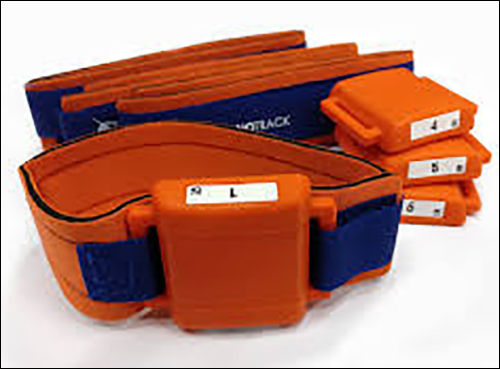With its first of what may become a series of annual endurance races, the Bear Grylls Survival Challenge, in Santa Clarita, Calif., will leverage ultrahigh-frequency (UHF) radio frequency identification technology to track the level of fitness and endurance of each participant during challenges as wide-ranging as racing up steep hills, eluding mines and eating mystery proteins.
Traditional races, such as triathlons or marathons, track an individual’s speed based on the time that he or she begins the race and when that person crosses the finish line. The Survival Challenge, however, is not just about speed, but also how well competitors perform in a variety of challenges, some in very remote locations. To manage the scoring of each challenge, the event required a system utilizing technology that could adapt to changes. The solution is provided by fitness events technology company SweatWorks.
The Bear Grylls Survival Challenge, scheduled for Apr. 28–29, will cover approximately 4 miles of area at the Blue Cloud Movie Ranch, in Santa Clarita. The course was designed according to challenges from survivalist and entertainer Bear Grylls. The event is expected to draw 6,000 participants. The outdoor competitive survival course will test both mental and physical strength, as well as each participant’s instinct and resourcefulness.
On race day, every participant will receive an Echo-Sigma Survival Pack, containing familiar items, including a bandana, a plastic bag and other survival tools. Participants will compete on an off-road journey through 18 unique survival scenario challenges across five different environments: an apocalyptic highway, a cave complex, a deserted village, a mountain ascent and descent, and an infested swamp.
Beginning with the post-apocalyptic highway, athletes must navigate a series of “mystery encounters” in tunnels, and march across desert country, through a war-torn village under enemy fire and across a mine field. Mission Everest challenges send them up a steep climb, then they must scavenge and consume an “unexpected protein source,” cross an infested swamp, and finally receive their survival score. To track where individuals are at any given time, as well as if they make a misstep, such as treading directly on a virtual mine, the system uses SweatWorks’ RFID technology.
Founded in 2012, SweatWorks is a creative digital agency headquartered in Virginia that creates what it calls “kick-ass interactive products.” In fact, says Mohammed Ibqal, SweatWorks’ founder and CEO, the firm has become a leading technology company in the fitness industry. Its products are used in gyms, in personal fitness products and at racing and CrossFit events. Iqbal says the company uses RFID not only to monitor milestones, such as when an athlete crosses a finish line, but also to enhance the event experience itself. Too often, he explains, RFID is simply part of a timing system. “At the end of the day,” he states, “we’re an agency that develops apps and experiences.”
Throughout the Bear Grylls Survival Challenge space, SweatWorks has installed ChronoTrack timing gates with built-in UHF RFID readers from Impinj. Some readers also come with antennas built into mats that will detect the RFID tags of any individuals who step on or near the mat.
One the day of the event, participants each receive a waterproof wristband with a built-in UHF RFID tag. The unique ID number on the wristband tag is linked to data about the participant and his or her category in the SweatWorks software.
As the competitors begin the race, each participant’s tag ID is captured at gates for the purpose of timing functionality, such as monitoring the amount of time it takes for him or her to climb a 500-foot steep hill, or the speed during a dash, from start to finish. But the minefield is testing choices made as participants try to navigate their way across without taking the wrong step. The mines are represented by the RFID-enabled mats, so if an individual steps on a mat, the tag ID is captured and a screen mounted at the challenge displays an alert that a fatal mistake has been made.
The collected data is used by the SweatWorks software in calculating each player’s survival score. Once players cross the finish line, they can view their accumulated survival score on a reader board located onsite. They can also use a QR-coded card, provided with their backpack, to access the details from the SweatWorks system on their mobile phone.
The system is currently being installed, Iqbal says, and poses a few unique challenges. For one thing, the course is compact, with 18 challenges, requiring a total of 22 readers, all within a four-mile area. In some cases, readers are mounted within close proximity, and SweatWorks has used a combination of antenna-positioning and software algorithms to ensure that tags are read accurately.
In the long run, Iqbal reports, the technology could do more for future Survival Challenges, assuming they continue on a yearly basis. For instance, he says, the technology could be used in combination with cameras, which would take pictures or videos of participants as they complete their challenges. That media would then be linked in the software with the tag ID.
If a user wanted to share his or her images or videos on social networks, that person could provide network accounts while registering, and the software could then display that content on the participant’s site in real time for friends and connections. Participants could also use an app or sign into the event website to access photos for purchase.



